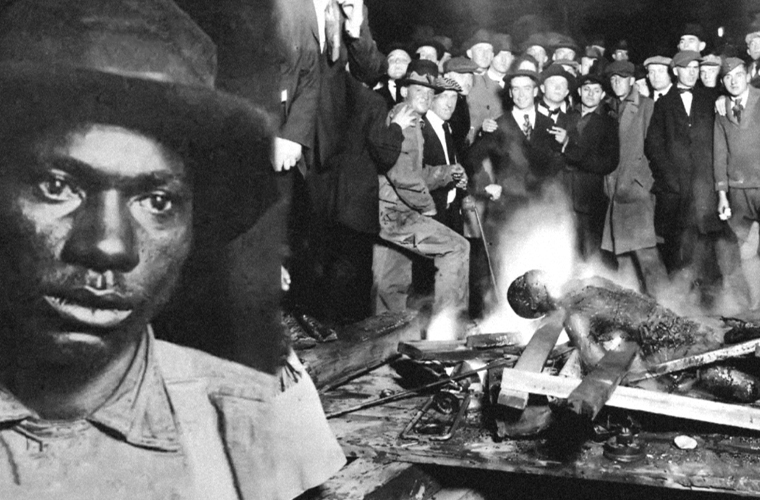During the “Red Summer” of 1919, a wave of racial and labor violence swept through the United States. The Omaha Courthouse Lynching of 1919 was an infamous part of the wave.
It was witnessed by an estimated 20,000 people, making it one of the largest individual spectacles of racial violence in the nation’s history.
The Great Migration brought tens of thousands of African Americans to northern industrial cities—including Omaha, Nebraska, which saw its black population double from 4,426 to 10,315 in the second decade of the 20th Century.
Like other cities across the North, racial tensions in Omaha were fuelled by resentment by white ethnic groups over job competition due to the growing black population.
Following a national pattern, the tension was exploited by Omaha Bee in the summer of 1919. The newspaper gave daily accounts of attacks by African American males on white women, without similar coverage concerning assaults on African American women, by either black or white males.
While the other major Omaha newspapers carried similar stories, the news was sensationalized the most by the Omaha Bee, blaming in particular Mayor Edward P. Smith and his hand-picked police chief, Marshall Eberstein.
One particularly provocative story in September 1919 described Will Brown, a 40-year-old African American meat-packinghouse worker, who was accused of raping a 19-year-old white woman, Agnes Lobeck.
Before Brown was arrested, the Bee carried detailed accounts of the story along with pictures of Brown and Lobeck. A mob had tried and failed to seize Brown when the police went to his residence to arrest him.
He was arrested and held for a few hours in the Douglas County Courthouse in downtown Omaha. Influenced by the newspaper story, a mob comprising of 250 men and women gathered in the white working-class area of South Omaha and marched north into downtown. They gathered outside the Courthouse in the late afternoon of Sunday, September 28.
Mayor Edward P. Smith arrived on the scene and attempted to persuade the rioters to leave. He was struck on the head from behind, a rope was placed around his neck, and his unconscious body was strung up to a lamppost. He was cut down before he succumbed.
The mob then broke into the courthouse and tore off Brown’s clothing as he was being dragged out. They hanged him from a lamppost and riddled his already dead body with bullets. His body was then tied to a police car, dragged to a major downtown intersection, and then burned.
The fragments of the rope that was used to lynch him were sold as souvenirs for 10 cents apiece. Numerous photographs of his charred body were taken, including one which shows some of the lynchers proudly posing behind Brown’s charred body. Around the world, that photo became known as the iconic image of Red Summer violence.
US Army units arrived on the scene after Brown had been killed and set up one command post at the intersection of 24th and Lake Streets, which remains the heart of Omaha’s black community to this day, and another in South Omaha, the neighborhood from which most of the rioters had come.
According to the official announcement, the 24th and Lake Street post was there to protect African Americans from further violence. However, an oral legend in the black community holds that the reason for the posts was to prevent retaliation by black Omahans who were waiting on the rooftops of 24th Street with guns.
One of the witnesses to the lynching was young future actor Henry Fonda, who later remembered, “It was the most horrendous sight I’d ever seen… My hands were wet and there were tears in my eyes. All I could think of was that young black man dangling at the end of a rope.”
The continuous documentation of these horrific episodes of history can not be overemphasized. This is because we live in a world that chooses to forget or finds pleasure in hurting the Black man and dismissing his cries and complaints as “hate speeches” or fiction. We believe that this evil done to the Black race worldwide should be taught to our people, both young and old.
The knowledge of the crimes against us as a people will help us in determining our enemies, and friends and further see them for who they are in this century because, in all honesty, they have not changed towards us.
Racism and barbaric tendencies against the Black man are still a popular trade in the world today.
If the caucasian has not repented of his terrorism and exploitation of the black man for the last 1,000 years (and more), what makes us believe that they have our best interest at heart, with their policies, foreign aid, and what have you?
Let the knowledge of these lynchings spur our people to self-determination and create social and economic circles that would serve us, and protect us from those who seek to exploit and harm us.

